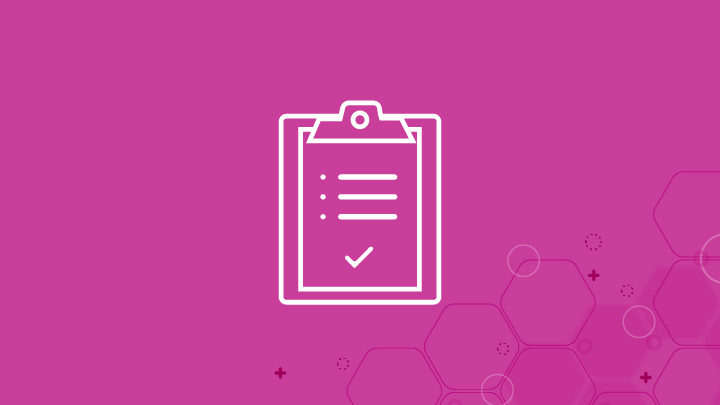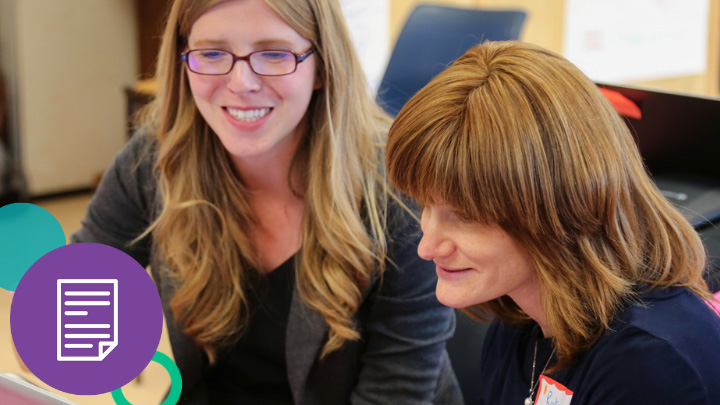Effective instructional coaching is the kind of sustained, collaborative, classroom-aligned professional learning that creates tangible outcomes in schools. These outcomes can range from cultural to academic and often differ from school to school because of factors like the relationships between teachers and coaches, the goals that coaches and teachers work toward, and even the ratio of teachers to coaches.
With these nuances in mind, how can school leaders best measure the impact of instructional coaching? “Student growth” is too broad and too removed from the coaching process to be the sole metric for coach effectiveness. Administrators need to identify specific student and teacher moves they expect to see during frequent, informal classroom walkthroughs over the course of the school year.
We believe coaching is working when teachers consistently implement research-based strategies and systems and use the resulting data to reflect on how their classrooms are changing. These are the ingredients of a process we can trace to higher student achievement downstream. There is a lot of work that goes into creating the conditions for teachers to implement the right strategies at the right time, however. The upstream strategic planning process with administrators helps us align on coaching focus areas and understand what classrooms should look, sound, and feel like at the end of the coaching term.
Goals Come First
At CoSN back in March 2018, I attended Dr. Darren Draper’s session on best practices in instructional coaching. Dr. Draper is the Director of Innovative Learning for Alpine School District, which serves 80,000 students just south of Salt Lake City, Utah. He suggested that leaders identify clear coaching goals with metrics for success, offer public and enthusiastic support for coaching, and limit the coaching focus to a specific cohort of teachers or instructional initiative. After the session, I asked Dr. Draper what he felt was the most important factor for success in coaching. “The goal. It provides the incentive for change,” Draper said. “Without that goal, teachers are wandering.” An achievable goal helps coaches guide teachers through a cycle of data-driven experimentation, analysis of evidence, and focused reflection. It is the repetitive focus on doing one thing well before moving onto the next that helps new behaviors take root.
Before coaching begins, administrators should provide goal-setting parameters to coaches and teachers. Is the entire school focused on one initiative, like increased student discourse or differentiated small-group instruction? Or do teachers and coaches have the autonomy to set individual goals to address specific student needs or teachers’ instructional growth areas?
Teachers are Empowered to Continuously Self-Assess
A clear goal means little if it’s admired then put on a shelf until the end of the school year. Coaches should support teachers to break their goals into actionable chunks, then identify the kinds of evidence that will indicate readiness to move from one chunk to the next. For example, if a teacher is working on decreasing time spent on direct instruction and increasing student-to-student interaction, having a student run a timer for each section of the class is a low-lift way to quantify progress-to-goal. Evidence of implementation should include artifacts like student work as well as teacher reflections, which can either be written down or shared with a coach in real time.
Self-assessment is also an accountability tool. If there is a disconnect between what a teacher shares and what may be observed during a walkthrough, this holds both teacher and administrator accountable for diving into the data and having an authentic conversation. It also helps administrators support coaches to provide more targeted feedback in future observations.
Students Have a Voice
Student voice is rarely solicited, unfortunately. But if students aren’t perceiving a change in their learning environment, coaching isn’t working. If a teacher’s goal is to differentiate his instruction in response to student interests, students should be surveyed to see if they feel they have greater opportunities for choice in the classroom. They should be asked if what they’re working on is too hard or too easy.
Surveys can be administered digitally and anonymously, using free apps like Typeform, and this data can be gathered and tracked over the lifespan of the goal teachers and coaches are working on together. In a classroom where a teacher is implementing self-paced learning, administrators can ask students questions like: What is your personal learning goal for this week? What should you do if you get stuck on something? How will you know you are ready to move onto something new?
Classrooms Show A Change
Adults, just like kids, don’t typically follow a linear path toward reaching a goal. It takes trial and error and sometimes a few steps backwards to implement and sustain new instructional practices. Because of this, quantitative data alone will not paint the full picture. Administrators should regularly visit the classrooms of teachers receiving coaching. It’s just as important to be there for the messy days as the smooth days, because this is the only way to witness the coaching process and behavior change in action—and as a result, classrooms that look, sound, and feel ready for a new cycle of goal-setting and continuous improvement.







